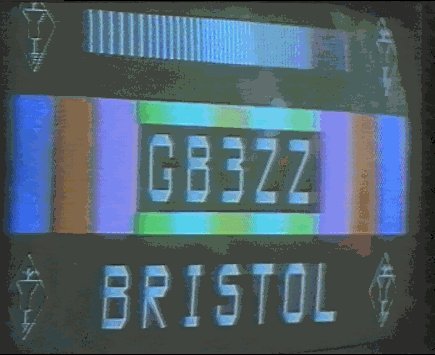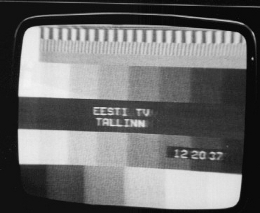| A GUIDE TO ATV |
|
In much the same way as Short Wave Listeners like to listen to distant radio stations, there is a dedicated band of DX-TV enthusiasts who watch out for TV stations beyond their normal coverage area. A specialist magazine - "TeleRadio News"- is available for them along with regular columns in "Television" and "Short Wave Magazine". The bulk of DX-TV is on band I, and occurs mainly in the summer months of May to September. Band I covers the frequency range of about 4 to 70 MHz, which was used for the now defunct British 405 line transmissions. However, in much of continental Europe, this band is widely used for 625 line broadcast TV. In summer, intense ionisation of the E layer in the ionosphere produces sporadic E, an enhanced propagation condition which results in many of these distant TV stations being visible at strong signal levels in the UK. All that is necessary to receive these is a simple aerial - because of the signal strength a half wave dipole is often sufficient - and a suitable receiver. Most UK TV sets do not cover Band I, but specialist sets are available from suppliers such as Aerial techniques and HS Publications. HS Publications specialise in this area of DX-TV, and produce the aforementioned "TeleRadio News", and sell a variety of special books, aerials and other accessories. They also make the D-100 DX-TV converter, which enables a standard UK UHF TV set to receive the DX on Band I. It can be fascinating to watch TV from Spain, Italy, Germany, Iceland, all of Eastern Europe, Scandinavia and even Russia with such simple equipment. The pictures are not always of watchable quality, and can fade and distort badly on occasions. Never the less, like other forms of the Dxing hobby, it can be very addictive and satisfying to finally bag an elusive station or country. The latest
variation on the DX-TV theme is satellite DX, where the use of a 1.2 m
steerable dish will bring in many more satellites than the well publicised
listings. Your dish must be able to have a clear view of the geostationary
Clarke belt where all the satellites are positioned. In the UK, this extends
about 40 degrees either side of due south, with a peak elevation of about
30 degrees. Good quality pictures can be picked up from most of the European
TV channels.
|
|
| Home | Advertising | What's New | Photos | |



